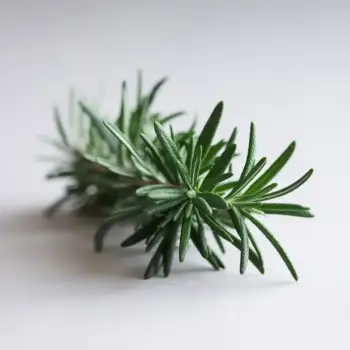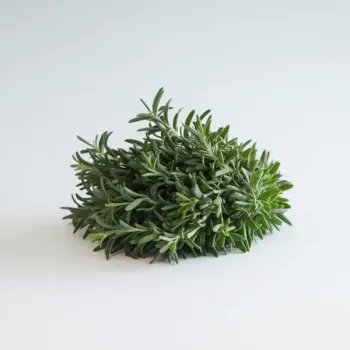Rosemary and marjoram are aromatic herbs used in cooking. Rosemary has a bold, resinous flavor suitable for meats and stews, while marjoram is sweeter with a citrus hint, ideal for lighter dishes. They differ in taste, texture, and culinary uses, and can sometimes substitute for each other.

Rosemary is a woody, perennial herb with fragrant, needle-like leaves. It's native to the Mediterranean region and is known for its bold, resinous flavor, which holds up well to cooking and pairs excellently with a variety of dishes, especially meats and stews.

Marjoram is a tender herb, often used to add a delicate, sweet flavor with a hint of citrus to dishes. It is a relative of oregano but offers a more nuanced and gentle flavor. Marjoram is commonly used in European and Middle Eastern cuisines.
The key differences between rosemary and marjoram lie in their taste, texture, and culinary uses. Rosemary has a stronger, more pungent flavor and a woody texture, while marjoram is milder and has a softer leaf. Rosemary is often used in hearty recipes, whereas marjoram is preferred for lighter dishes. The source also differs, with rosemary being more drought-tolerant and marjoram requiring a bit more care and moisture.

Your ultimate Recipe Box, Meal Planner, and Cooking Class all in one
Rosemary is a classic choice for meat dishes, particularly lamb, pork, and poultry. Its robust flavor complements the savory notes of the meat, and it can withstand long cooking times. Try adding rosemary to marinades or as a seasoning for roasted meats. Marjoram's delicate flavor can enhance the taste of lighter meats like chicken or veal without overpowering them. It works well in sautéed dishes or as part of a herb rub for grilled meats.
Rosemary's bold flavor is a fantastic addition to hearty soups and stews. It pairs well with root vegetables and beans, and its flavor deepens with prolonged cooking. Add rosemary early in the cooking process to infuse the dish with its aroma. Marjoram is perfect for lighter soups and stews, especially those with a tomato or cream base. Its subtle flavor will add depth without overwhelming other ingredients. Marjoram should be added toward the end of cooking to preserve its delicate notes.
Rosemary can turn simple roasted or grilled vegetables into a flavorful side dish. It's particularly good with potatoes, mushrooms, and squash. Chop it finely to avoid the tough texture of the leaves. Marjoram's sweet flavor makes it a great addition to fresh or lightly cooked vegetables, such as peas, carrots, and spinach. It complements the natural sweetness of the veggies and adds a pleasant aroma.
Both rosemary and marjoram are low in calories and rich in antioxidants and vitamins.
| Nutrient | Marjoram ( per Tablespoon ) | Rosemary ( per Tablespoon ) |
|---|---|---|
| Fat | 0.05g | 0.1g |
| Calcium | 10mg | 14mg |
| Protein | 0.07g | 0.04g |
| Calories | 2 | 2 |
| Vitamin C | 0.3mg | 0.4mg |
| Carbohydrates | 0.6g | 0.5g |
You can substitute rosemary for marjoram, especially in hearty dishes, but use it sparingly due to its stronger flavor.
Yes, marjoram is closely related to oregano but has a milder and sweeter flavor profile.
Yes, both rosemary and marjoram can be used in their dried form, though the flavor will be more concentrated, so adjust quantities accordingly.
Fresh rosemary and marjoram should be wrapped in a damp paper towel, placed in a plastic bag, and stored in the fridge. Marjoram can also be stored in a glass of water on the counter.
Both herbs can be used together in dishes that can benefit from the depth of rosemary and the subtlety of marjoram, such as roasted vegetables or Mediterranean-inspired stews.